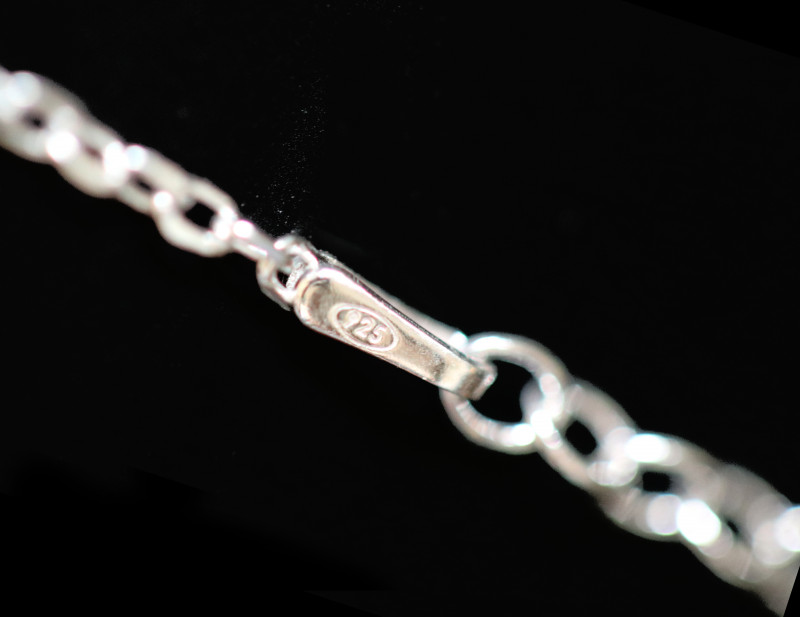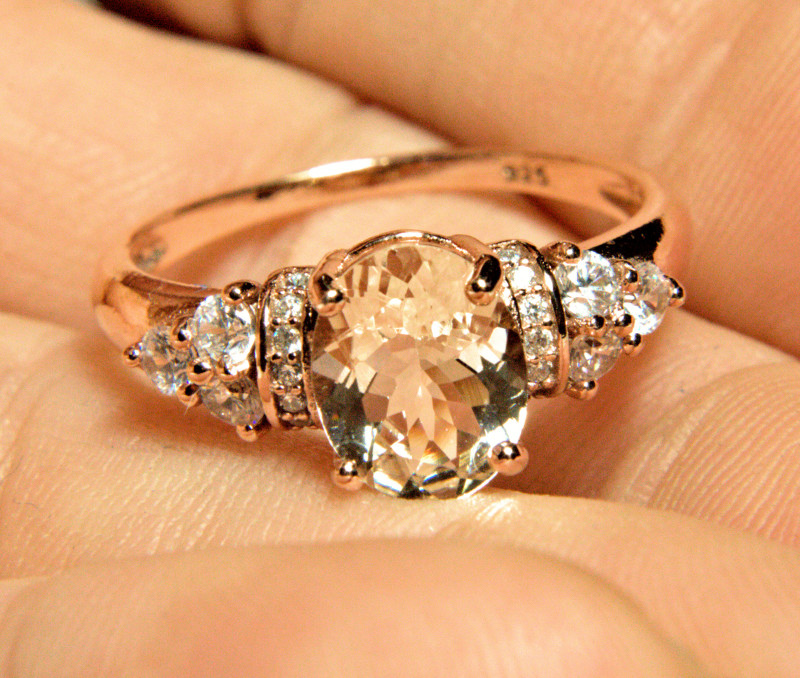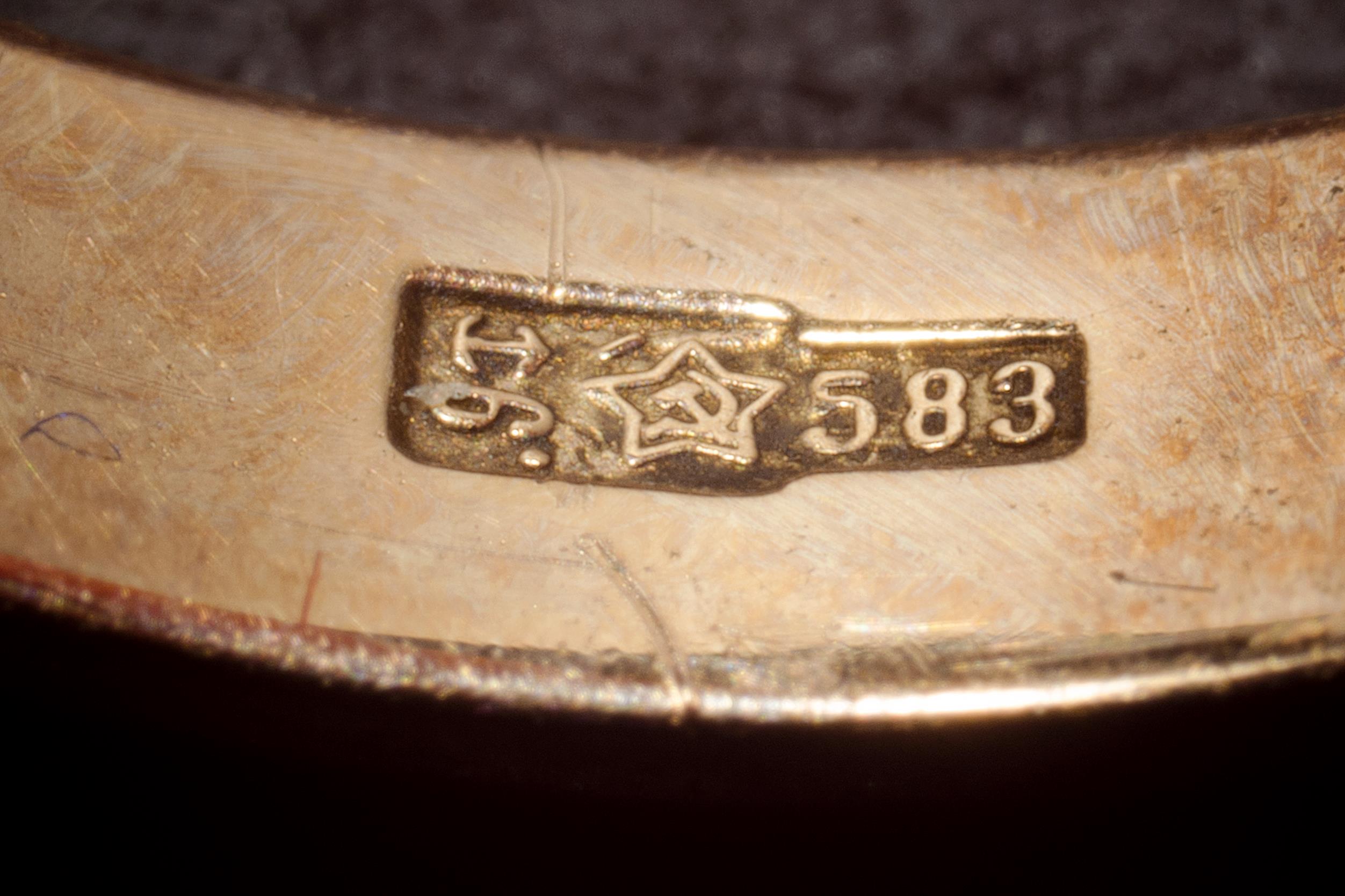
A Complete Guide to 925 Stamps & Other Jewelry Hallmarks
 If you’ve ever inspected high-quality jewelry closely, you may have noticed small words, letters, or numbers stamped onto the metal. These are called jewelry hallmarks. But what do the markings on jewelry mean?
If you’ve ever inspected high-quality jewelry closely, you may have noticed small words, letters, or numbers stamped onto the metal. These are called jewelry hallmarks. But what do the markings on jewelry mean?
Jewelry hallmarks are often called purity marks or quality marks because most often, hallmarks indicate the metal type and purity.
Hallmarks are important for authenticating jewelry, especially valuable pieces. You’ll see these stamps on noble (or “precious”) metals like gold, platinum, silver, and palladium.
But hallmarks can also communicate who created the piece, who authenticated it, and where the jewelry was made.
Today, we’ll have a complete jewelry stamps list and what each hallmark means. By the end, you’ll be able to identify authentic, valuable jewelry with just your eye and maybe a magnifying glass.

What Are Purity Marks on Jewelry?
The most common type of jewelry hallmark is a purity mark. Purity marks, also called quality marks or standards of fineness, tell you how much of the metal is pure. Let’s start with gold purity marks.
Gold Purity
Gold purity is measured in karats, which is different from “carat” weight used for gemstones. Karats are actually a ratio that tells you how much of the gold is pure gold and how much is additional non-gold metals. The gold’s purity is called its “karatage.”
Pure, 100 percent gold is 24K (24 karats), so 24 is the “100” maximum in the ratio, if you compare it to a percentage. 18K gold is 18 parts pure gold to 6 parts other metals, making it 75 percent pure gold (18 is 75 percent of 24). 10K gold is 10 parts gold to 14 parts other metals, making it 41.67 percent pure gold.
Therefore, gold purity marks may have the karatage or the percentage; sometimes, jewelers stamp both next to each other.
Silver Purity
Silver purity, or “fineness,” is measured similarly to gold but without the karat ratio aspect. Instead, silver purity hallmarks just use the percentage number of pure silver without a decimal point.
Percentage hallmarks on gold jewelry also give the number without decimals. For example, 75 percent would be stamped as 750 because it’s technically 750 parts per 1,000.
One of the most well-known silver purity marks is 925, but what does a 925 stamp on jewelry mean?

925 Stamp on Jewelry
In short, a 925 jewelry stamp (hallmark) indicates the metal is 92.5 percent pure. In most cases, 925 is used on silver jewelry or jewelry that incorporates silver.
What’s the difference between sterling silver and 925 silver? In essence, sterling silver and 925 silver mean the same thing: the metal contains 92.5 percent pure silver and 7.5 percent other metals. Some nations have specific requirements about which metals can be added for it to count as true “sterling” silver.
So, is 925-stamped silver real silver? Yes, 925 or sterling silver is real silver. In fact, 100 percent silver is too soft for jewelry, so the highest-purity silver you’ll find is 999 or 99.9 percent pure silver.
Outside of silver, you may come across a 925 stamp on gold jewelry.
925 gold jewelry is not solid gold, but rather 925 silver that’s been gold-plated. In other words, the piece has a layer of gold adhered to a base of sterling silver. Gold-plated sterling silver jewelry is often called gold vermeil, though vermeil sometimes has requirements for thicker plating.
Now, what is 925 palladium?
925 palladium is actually 925 silver, but palladium makes up 3 percent of the additional metals mixed in. The addition of palladium makes the silver harder, more resistant to tarnishing, and slightly more lustrous.
In contrast, 925 platinum contains 92.5 percent pure platinum. But typically, you’ll see 925 on silver or gold-plated silver.
Of course, 925 or 92.5 percent isn’t the only numbered jewelry marking.

Other Number Hallmark Meanings on Jewelry
Besides the common 925, you’ll see plenty of other numbers stamped on jewelry.
For instance, what is 825 in jewelry? An 825 jewelry stamp means the metal is 82.5 percent pure. For gold, this translates to 19K.
What does 916 mean on jewelry? A 916 jewelry stamp means the metal is 91.6 percent pure. For gold, this translates to 22K.
To give you a summary, here’s a list of typical gold karatages and percentages as you may see them stamped:
24K; 24k; 24 Karat; 99.9%; 999
18K; 18k; 18 Karat; 75%; 750
14K; 14k; 14 Karat; 58.5%; 585
12K; 12k; 12 Karat; 50%; 500
10K; 10k; 10 Karat; 41.7%; 417
It’s possible to have in-between karatages like 22K or 16K gold. You can calculate the percentage of these by dividing the karats by 24 — for 22K gold, 22 divided by 24 is 0.916, or 91.6 percent, and the hallmark may say 916.
For reference, 24K gold is usually too soft for jewelry use. The purest gold you’ll see in jewelry is 22K gold.
Another number to know is 1/20 usually followed or preceded by the karatage and sometimes “GF” — this is stamped on gold-filled jewelry to indicate that gold makes up 5 percent (1/20) of the total weight. A 14K gold-filled ring may have “GF 14/20” or “1/20 14K GF” stamped inside.
Most number hallmarks translate to metal purity, with a couple of exceptions.
Ring Sizes and Gemstone Weights
Besides purity numbers, another numerical hallmark occasionally stamped on rings in particular are figures like 6, 7, 8, 9, and 10 — these indicate the ring’s size.
Rings that incorporate precious gemstones like diamonds may also have a hallmark indicating the gemstone’s weight (in carats).
Gemstone weight may be etched as the number alone (e.g. “0.75” or “.75” for a gem weighing 0.75 carats), or a number followed by “ct.” For multi-diamond rings like those with pave settings, jewelers may leave a hallmark indicating the total weight of all the diamonds on the stone with the number followed by “tdw” for “total diamond weight.”
Other gemstone-related jewelry hallmarks include:
CW — Carat Weight (usually of the center stone)
SD — Solitaire Diamond (a faceted shape)
CZ — Cubic Zirconia (a synthetic gemstone diamond substitute; usually written after its weight)
Speaking of letter hallmarks...
 Pictured above: Jewelry hallmark for Dirce Repossi, an Italian jewelry brand | Image credit: Mwsa94, Creative Commons Attribution-Share Alike 4.0 International license
Pictured above: Jewelry hallmark for Dirce Repossi, an Italian jewelry brand | Image credit: Mwsa94, Creative Commons Attribution-Share Alike 4.0 International license
What Do the Letters Stamped on Jewelry Mean?
Numbers are the most common type of hallmark, but you’ll see letters also. The letters can have various meanings, but we’ll start by looking at metal-related ones.
Type of Metal
Since certain metals are more valuable, it’s important to know what kind of metal your jewelry is made of — that’s where letter hallmarks come in handy.
Common letter jewelry markings that correspond to the type of metal used are:
P or KP — Plumb Gold (P is usually 14K gold while KP may follow any karatage, e.g. 18KP, to indicate that the gold is that pure or higher)
PLAT or PT— Platinum
S.S. or Steel or St. Steel — Stainless Steel
Silver or S. Silver or STG or STER — Sterling Silver
Pd or Pall — Palladium
Some metals are simply written out fully, like tungsten or titanium. Some metal markings may be confusing, like “German Silver” or “Nickel Silver,” which do not contain silver but rather copper, nickel, and/or zinc.
Gold jewelry specifically has its own set of letter hallmarks.
Letter Markings on Gold Jewelry
You know the gold purity hallmarks, but there are also some letter hallmarks on gold jewelry to be familiar with. For one, karats can be written as K, Kt, Karat, or WGD (Weight Gold).
Other gold jewelry letter markings include:
GF or G.F. — Gold-Filled
GP or G.P. or HGE or GE — Gold-Plated (also called Gold Electroplated)
V20 — Rolled Gold
V or HGE — Gold Vermeil (also called Heavy Gold Electroplated)
Oftentimes, these markings follow the karatage. For example, “14K GP” would indicate the piece has been plated in 14K gold.
Sponsor or Maker’s Marks
Some jewelry letter markings indicate who made it, often called a “maker’s mark.”
For one, the goldsmith who crafted the jewelry may stamp their initials. The company that makes the jewelry (the jeweler) or the distributing manufacturer may have a “sponsor’s mark,” like “T & CO.” for Tiffany & Co.
There are simply too many maker’s marks to list, but you can use search features at Lang Antiques or Heritage Auctions.
Maker’s marks often incorporate symbols, too.
 Image credit: Star61 | Creative Commons Attribution-Share Alike 4.0 International license
Image credit: Star61 | Creative Commons Attribution-Share Alike 4.0 International license
Meaning of Symbols Stamped on Jewelry
While you can customize jewelry with etched symbols, certain symbols can give you information about your jewelry’s origins or specifications.
Shapes Surrounding Purity Marks
Numerical purity marks may be surrounded by a particular shape depending on the metal. Common metal purity symbols are:
Silver — Horizontal oval
Palladium — Connected, vertical ovals around each number
Gold — Octagon elongated horizontally
Platinum — Pentagon pointing upwards
Maker’s Mark Symbols
As mentioned before, maker’s marks often incorporate both letters and shapes.
For example, an arrow stamp inside a ring where the arrow pierces the letter “U” from left to right could mean it was manufactured by Uncas Manufacturing Co. in Rhode Island, USA.
With the hundreds of designers, jewelers, and goldsmiths out there, it’s nearly impossible to list every single maker’s mark.
Assay Office Symbols
Stamping jewelry to indicate its authenticity is far from new, beginning around 1238 AD. Governments and other authorities wanted to ensure buyers knew the true value of the piece they were buying.
Authentication hallmarks were typically done by an assay office, where trusted experts inspect the piece and stamp it according to its true characteristics. Assay offices are still around, with the Birmingham Assay Office being arguably the most well-established example.
All that’s to say that some symbols stamped on jewelry go way back, and many are given to indicate the assay office that authenticated the piece. Using Birmingham Assay Office as an example, they use an anchor symbol stamp.
The modern history of hallmarks goes back to the UK, and that’s where most assay offices are based. Symbols of British assay offices include:
Castle: Edinburgh
Rose: Sheffield
Leopard Head: London
Outside the UK, the Paris assay office uses a boar’s head stamp. Generally, since 1838, an eagle hallmark on gold jewelry means it came from France.
Here are some other national assay office symbols:

Going back to the UK, they also established date hallmarks.
Date Stamps on Jewelry
Starting in 1478, the UK required that precious jewelry be stamped with the date it was created (though technically, France started using it in 1427). The requirement ended in 1999, shifting to date stamps being voluntary, but many jewelers and assay offices still incorporate date hallmarks.
However, the dates are given as letters that correspond to a specific year and start over every 25 years. The only letters not used are either I, J, or L since they look similar and could be confused. For example, the current cycle starting in 2000 skips the letter I, going from H for 2007 to J for 2008.
Since different countries had different timelines, the year corresponding to each letter may differ. That’s where the symbols of nations and assay offices come in handy.
The main UK assay offices are on the same timeline, so here’s a list of the most recent letters and years:
2019: U
2018: T
2017: S
2016: R
… and so on. Since this system started in 2000, jewelry authenticated in 1999 has a new font style and starts with Z, with each preceding year having the preceding alphabetical letter.
What happens when the 25 years are up? To prevent confusion, the assay office changes the fonts or outlines of the letters to distinguish which 25-year period is being referred to.
Know Your Jewelry’s Value!
If you’ve ever wondered: how do I identify jewelry hallmarks? — now you know! Hallmarks can be tiny, but with a magnifying glass and this guide, you’re ready to shop for precious gold, silver, platinum, or palladium jewelry with confidence!
Ready to shop? Browse our collection of precious jewelry!
Search the Fashion Encyclopedia
Related Auctions
Related Articles
How to Buy Jewelry on the Internet. There are so many types of beads. It will be up to you to determine where you want to start, all authentic gemstone beads or if you will also use glass beads ‘man made’ as well as gold and silver beading. You
10th Apr 2019
How to buy a ruby for your ring or pendant,Make sure that you learn as much as you can about Rubies, prior to buying a ring or a setting that you are going to add Rubies to. Like Diamonds, Rubies can be flawed, and imperfect The Ruby is one of the most b
10th Apr 2019
Latest Articles
Titanium is a popular jewelry metal known for being lightweight, durable, and affordable. Learn all about titanium, how it compares to similar metals, and the pros and cons of titanium jewelry.
7th Feb 2023
Learn all about tungsten jewelry - from its history and uses to its durability and care. By the end of our guide, you’ll know if tungsten is right for you!
7th Feb 2023
Thinking about adding some timeless white gold jewelry to your fine accessories collection? Here’s all there is to know about sophisticated white gold!
29th Jan 2023




